Abandoned Sicilian lighthouse gets a modern glow-up
The Brucoli lighthouse renovation is part of an extensive initiative to bring back to life historical structures across Italy, promoting their heritage as well as their future potential
Benedetto Tarantino - Photography

The Brucoli lighthouse is nestled on one of Italy’s most charming and spectacular strips: between the towns of Catania and Siracusa, and on the outskirts of Sicily’s Val di Noto, it is surrounded by the sea on three sides and faces Mount Etna with spectacular views.
Built in 1911, the structure had been abandoned for decades before renovation works started in 2019 to bring the simple lighthouse and adjoined building back to life. The project was developed by Sicilian architectural studio Itinera: based in Caltanissetta, the studio has worked on several restoration projects both locally and elsewhere in Italy, working on churches and historical buildings. They developed this new project with special attention to the original building’s structural heritage, its archeological importance and its views across the sea. In particular, the studio also focused on using environmentally responsible materials and techniques throughout.
Inside, the compact century-old structure has been stripped back to create a contemporary, all-white interior that connects to the outdoors spaces, including a rooftop terrace. To accentuate the modernity and lightness of the space, the architects selected a series of iconic pieces by Italian furniture company Molteni. The company is no stranger to impressive interiors projects, having collaborated on tailor-made residential, hospitality, office and cultural projects worldwide.
Using both new and historical pieces, the project features harmonious interiors including the sinuous shapes of Gio Ponti’s D.151.4 armchairs upholstered in blue velvet and D.552.2 coffee table in the living area downstairs, as well as Rodolfo Dordoni’s sleek Fulham bed upstairs.
This project is part of an extensive initiative to bring back to life historical structures across Italy and promote their heritage as well as their future potential. The lighthouse’s updated structure and aesthetic are fit for its new life as accommodation for tourism and cultural purposes, and a welcome addition to the unique Sicilian landscape.

The interiors have been stripped back to create a contemporary space, furnished with pieces by Italian furniture company Molteni. These include the sinuous D.151.4 armchairs by Gio Ponti, upholstered in blue velvet and the Italian architect D.552.2 coffee table, both in the living area downstairs

The lighthouse is surrounded by the sea on three sides and faces Mount Etna with spectacular views
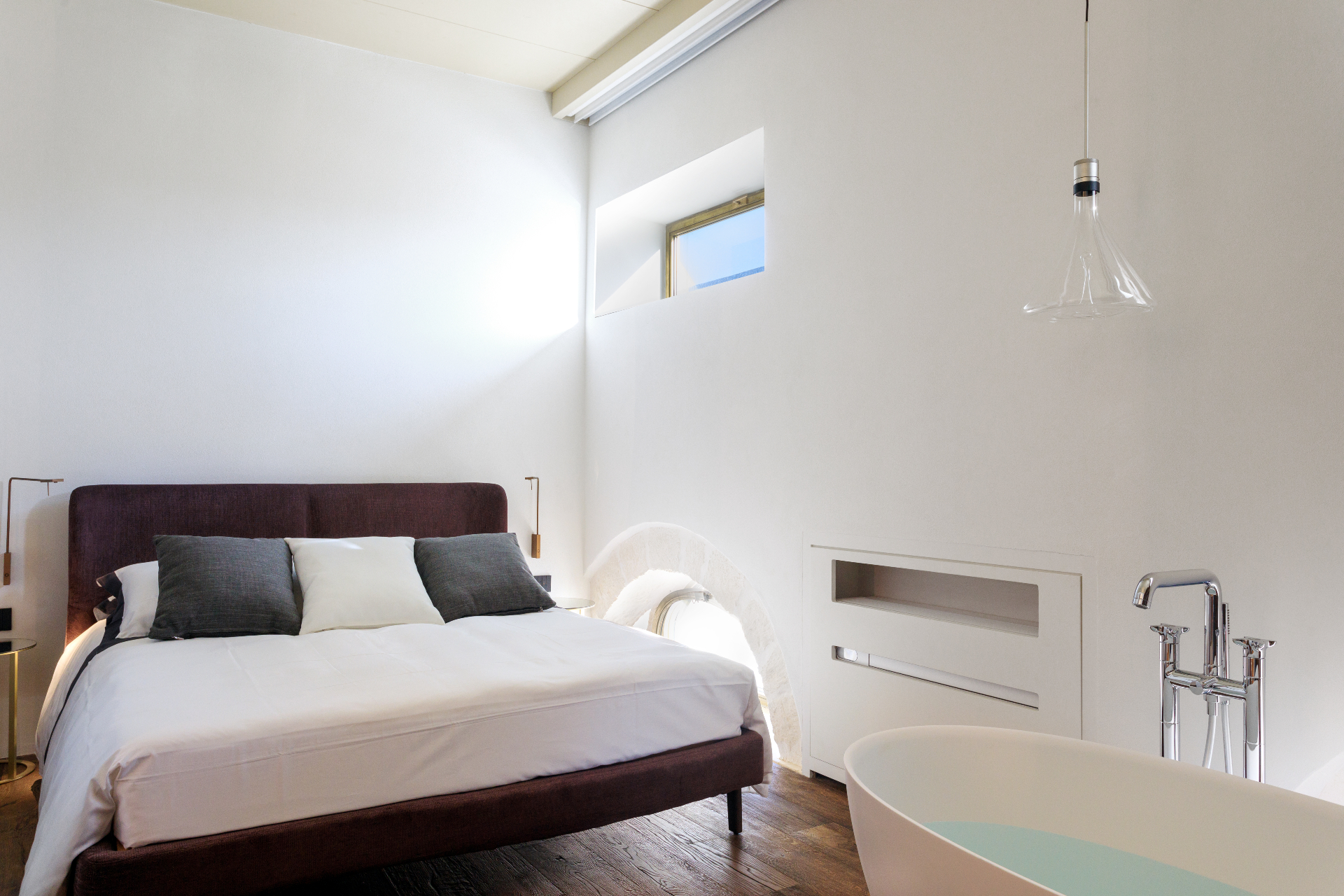
Upstairs, Rodolfo Dordoni’s sleek Fulham bed is the focal point of the lighthouse’s bedroom
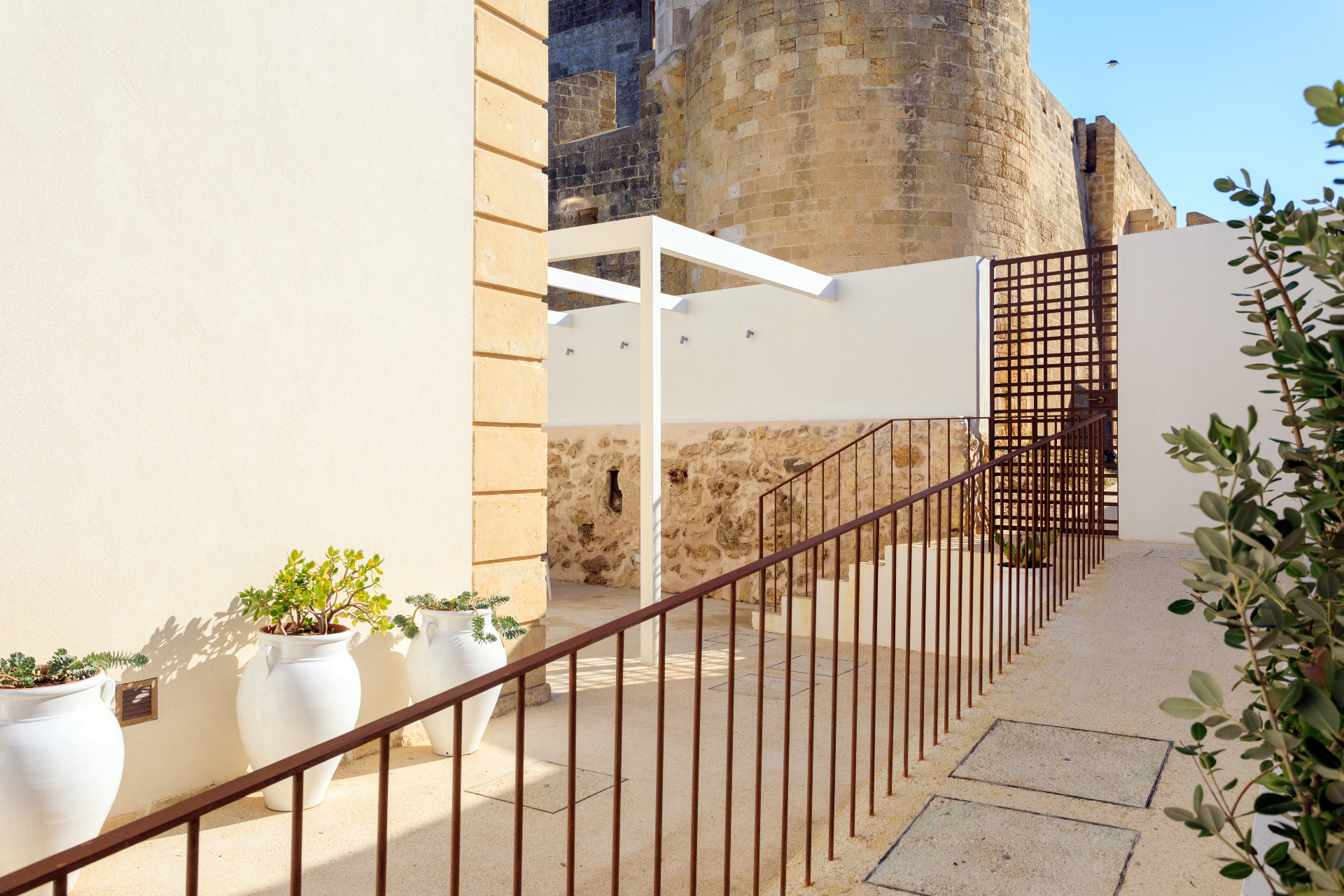
The all-white interiors connect to minimal outdoors spaces
INFORMATION
Receive our daily digest of inspiration, escapism and design stories from around the world direct to your inbox.
Rosa Bertoli was born in Udine, Italy, and now lives in London. Since 2014, she has been the Design Editor of Wallpaper*, where she oversees design content for the print and online editions, as well as special editorial projects. Through her role at Wallpaper*, she has written extensively about all areas of design. Rosa has been speaker and moderator for various design talks and conferences including London Craft Week, Maison & Objet, The Italian Cultural Institute (London), Clippings, Zaha Hadid Design, Kartell and Frieze Art Fair. Rosa has been on judging panels for the Chart Architecture Award, the Dutch Design Awards and the DesignGuild Marks. She has written for numerous English and Italian language publications, and worked as a content and communication consultant for fashion and design brands.
-
 How Memphis developed from an informal gathering of restless creatives into one of design's most influential movements
How Memphis developed from an informal gathering of restless creatives into one of design's most influential movementsEverything you want to know about Memphis Design, from its history to its leading figures to the pieces to know (and buy)
-
 Aidia Studio's mesmerising forms blend biophilia and local craft
Aidia Studio's mesmerising forms blend biophilia and local craftMexican architecture practice Aidia Studio's co-founders, Rolando Rodríguez-Leal and Natalia Wrzask, bring together imaginative ways of building and biophilic references
-
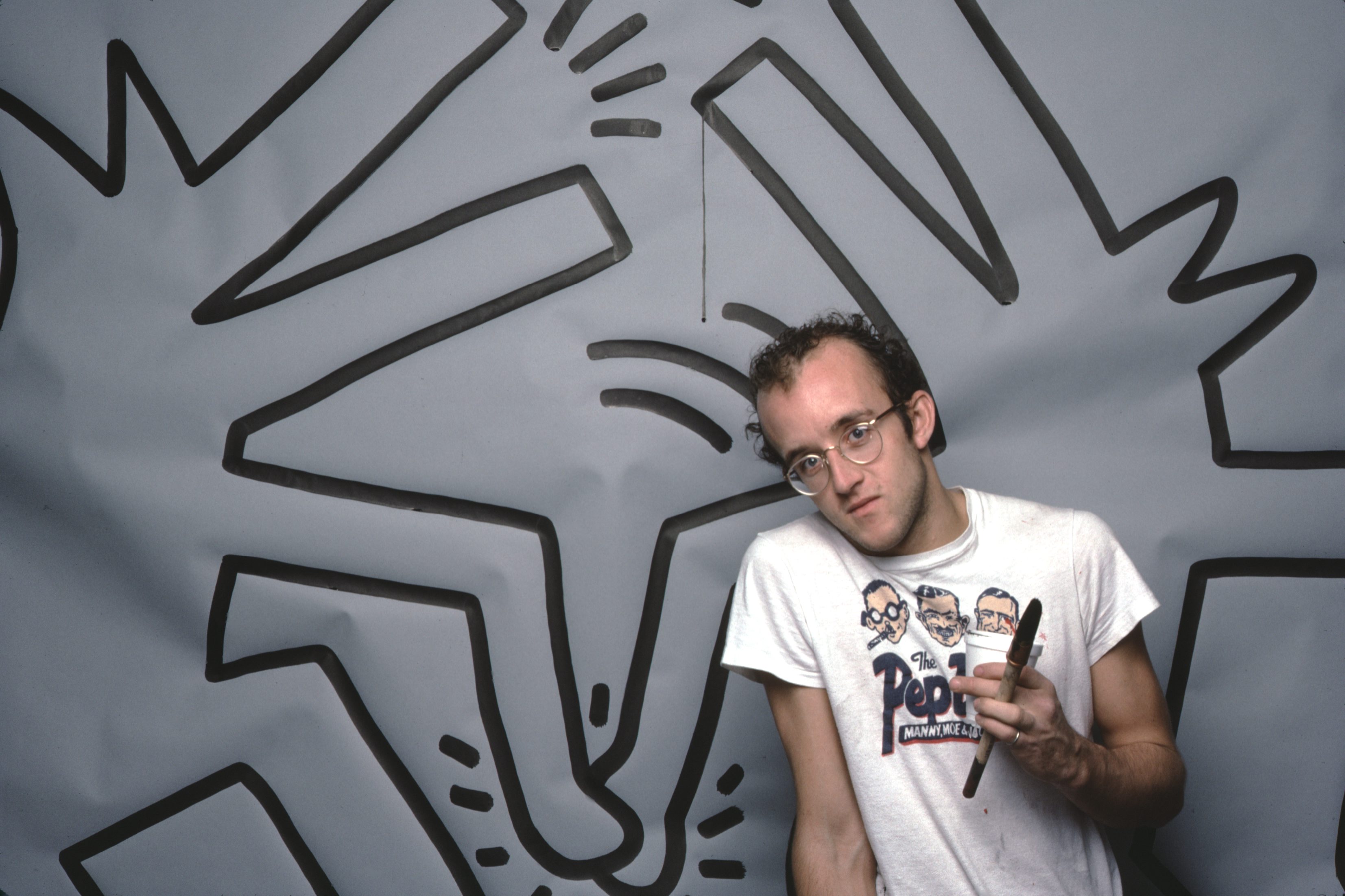 Modern masters: the ultimate guide to Keith Haring
Modern masters: the ultimate guide to Keith HaringKeith Haring's bold visual identity brought visibility to the marginalised
-
 Modernist Palazzo Mondadori’s workspace gets a playful Carlo Ratti refresh
Modernist Palazzo Mondadori’s workspace gets a playful Carlo Ratti refreshArchitect Carlo Ratti reimagines the offices in Palazzo Mondadori, the seminal work by Brazilian master Oscar Niemeyer in Milan
-
 Wang Shu and Lu Wenyu to curate the 2027 Venice Architecture Biennale
Wang Shu and Lu Wenyu to curate the 2027 Venice Architecture BiennaleChinese architects Wang Shu and Lu Wenyu have been revealed as the curators of the 2027 Venice Architecture Biennale
-
 At the Holcim Foundation Forum and its Grand Prizes, sustainability is both urgent and hopeful
At the Holcim Foundation Forum and its Grand Prizes, sustainability is both urgent and hopefulThe Holcim Foundation Forum just took place in Venice, culminating in the announcement of the organisation's Grand Prizes, the projects especially honoured among 20 previously announced winning designs
-
 Carlo Ratti reflects on his bold Venice Architecture Biennale as it closes this weekend
Carlo Ratti reflects on his bold Venice Architecture Biennale as it closes this weekendThe Venice Architecture Biennale opens with excitement and fanfare every two years; as the 2025 edition draws to a close, we take stock with its curator Carlo Ratti and ask him, what next?
-
 Step inside Casa Moncler, the brand’s sustainable and highly creative Milanese HQ
Step inside Casa Moncler, the brand’s sustainable and highly creative Milanese HQCasa Moncler opens its doors in a masterfully reimagined Milanese industrial site, blending modern minimalism and heritage, courtesy of ACPV Architects Antonio Citterio Patricia Viel
-
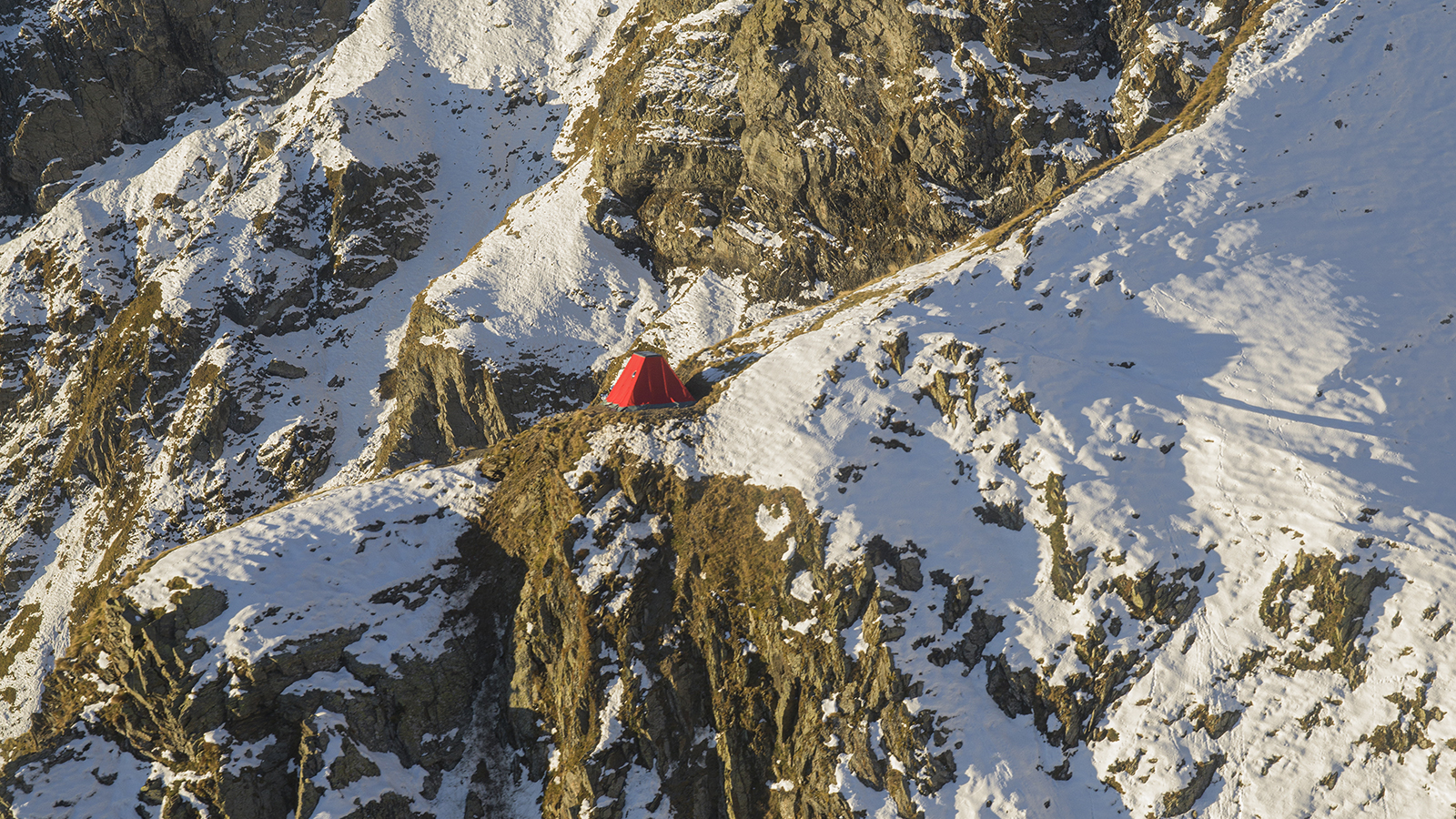 Aldo Frattini Bivouac is a mountain shelter, but not as you know it
Aldo Frattini Bivouac is a mountain shelter, but not as you know itA new mountain shelter on the northern Italian pre-Alp region of Val Seriana, Aldo Frattini Bivouac is an experimental and aesthetically rich, compact piece of architecture
-
 The 2026 Winter Olympics Village is complete. Take a look inside
The 2026 Winter Olympics Village is complete. Take a look insideAhead of the 2026 Winter Olympics, taking place in Milan in February, the new Olympic Village Plaza is set to be a bustling community hub, designed by Skidmore, Owings & Merrill
-
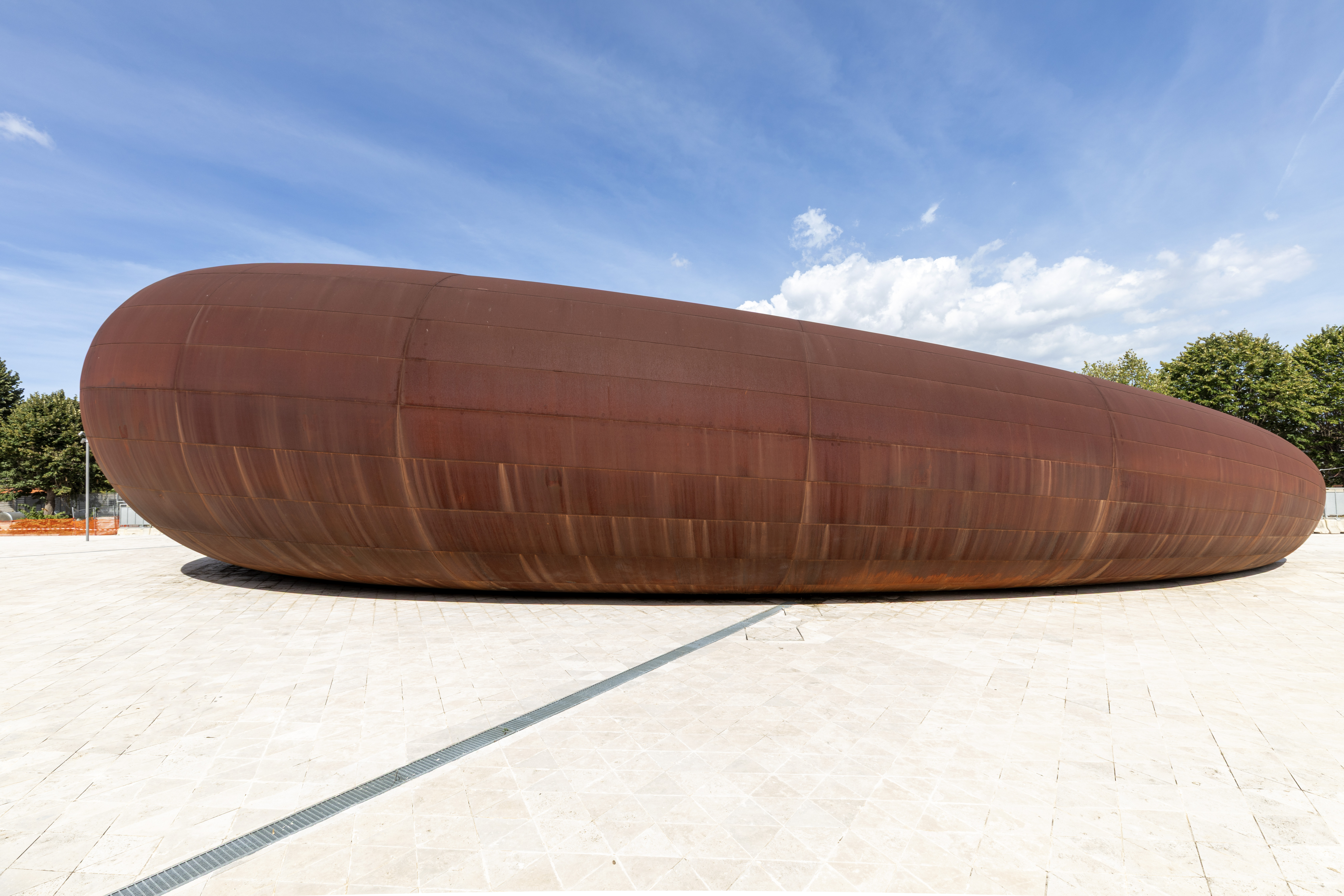 Anish Kapoor designs Naples station as a reflection of ‘what it really means to go underground’
Anish Kapoor designs Naples station as a reflection of ‘what it really means to go underground’A new Naples station by artist Anish Kapoor blends art and architecture, while creating an important piece of infrastructure for the southern Italian city